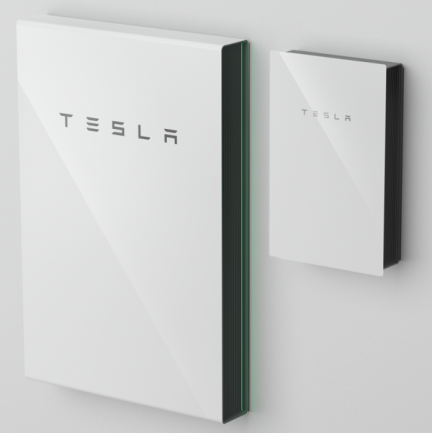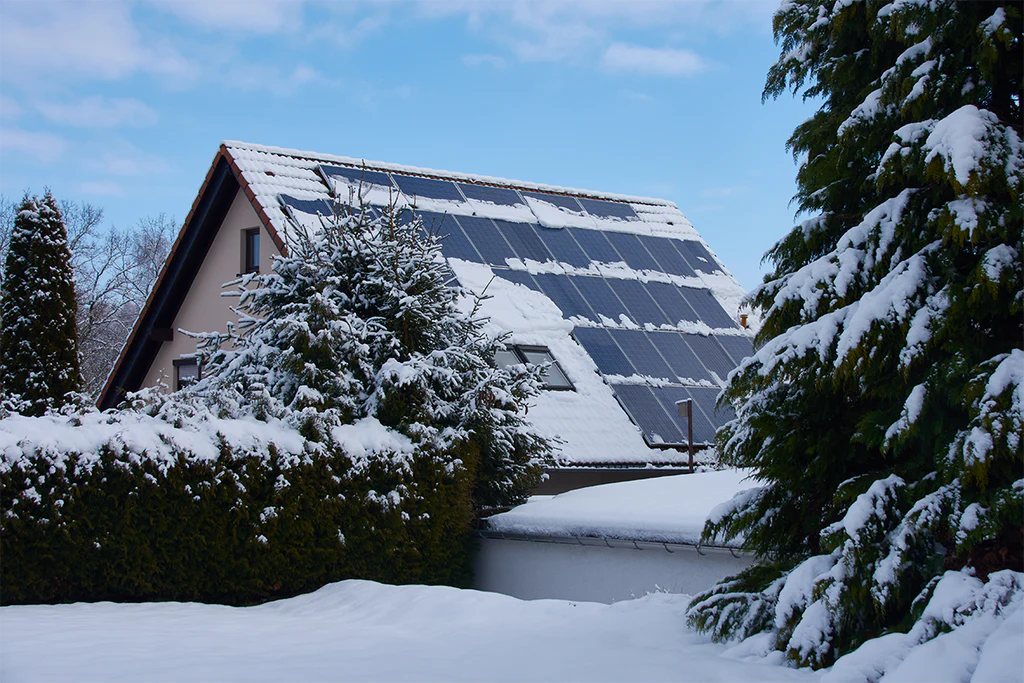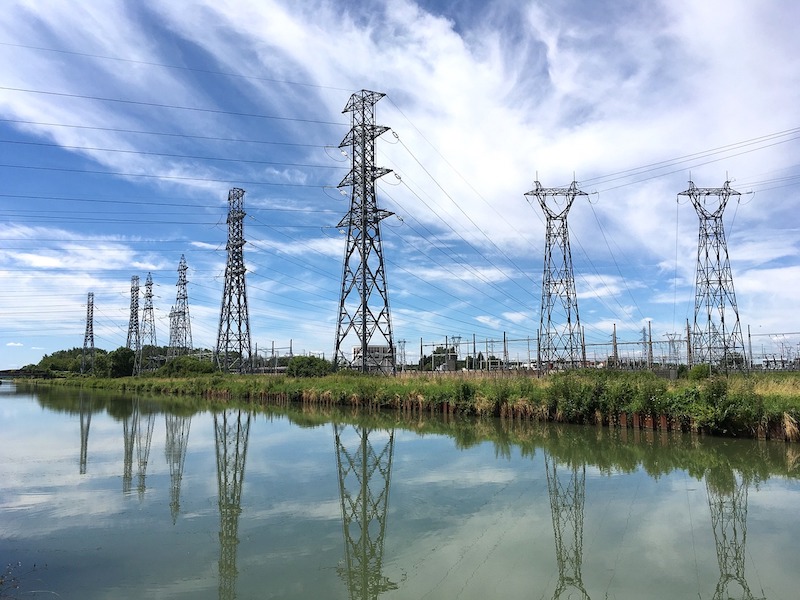Tesla Powerwall Explained

Answer the questions below to start your quote
Tesla Powerwall Explained
Tesla Powerwall is an energy game-changer. The same ground-breaking Tesla battery technology that has revolutionised the electric car market is now available to power your home.
Powerwall empowers homeowners to store clean solar energy for use round-the-clock and incorporates all the smart technology you’d expect from Tesla. Now installed with Backup Gateway it provides protection from power cuts (all too frequent occurrences due to increasing extreme weather events). A solar PV system – without the addition of a Powerwall – will shut down during a power cut for the safety of the grid. However – teamed with a Powerwall system – solar panels continue to produce energy during an outage.
This feature makes it an attractive option for homeowners and businesses needing to keep freezers frozen, lights on and tills working during grid outages. Powerwall owners can also take advantage of new agile clean energy tariffs, charging from the grid at the cheapest rate. The Powerwall will even stay one step ahead of the weather but more on that later.
The Basics
Powerwall is an energy storage system with a usable capacity of 13.5 kilowatt-hours. Up to 10 Powerwalls can be installed in parallel to cater for greater energy needs (though one is adequate for the average home with standard energy needs, it’s enough for 580 cups of tea).
An in-built inverter sits on top of the battery pack within the Powerwall to convert the stored DC power from the battery into AC power to supply your home. The inverter can output the resulting AC power at 7kW peak or at a 5kW continuous rate. Again, Powerwalls can be stacked to deal with greater energy requirements.
In charge mode the inverter converts AC to DC power to be stored in the battery. This can all be drawn down without affecting the life of the battery. Not all manufacturers are as honest with their battery stats.
Tesla Powerwall uses lithium-ion battery technology. Relative to other types of rechargeable batteries these means particularly high energy density (the amount of energy stored relative to battery size) and increased safety.
This is also the only liquid-temperature controlled domestic battery on the market adding to battery life and efficiency. Being fully liquid managed means the battery operates at the optimum temperature regardless of external temperature.
The App
The Powerwall is managed via the Tesla mobile app, which is available in the Android and iOS app stores. This is the same app that Tesla vehicle owners use to monitor their cars. Once you’ve logged into your Tesla account you can check on the current state of charge of the Powerwall and change settings but that’s just the start.
At this point it’s up to you how deep into the data you want to go.
The app allows you to monitor the flow of electricity between you solar PV array, Tesla Powerwall, the national grid and your home. This is represented by easy-to-grasp graphics and animations so it’s simple to monitor where the energy is moving.
Of course it doesn’t stop here, users can also view detailed graphs for each energy source illustrating where and when consumption or generation are occurring within each unit. This allows owners to see solar generation and Powerwall charging patterns and an in-depth view of home/business energy consumption. Rest assured Tesla have produced an instruction video and after a quick view of that you’ll be sailing around the app.
Operating modes
The internet connectivity of the Powerwall Backup Gateway allows it to stay connected to tech updates and to respond in real-time to electricity prices, energy policies and crucially, the weather. All this information is used to optimise the energy use of your home/business using a handful of impressive features. There are a number of different operating modes:
In self-powered mode Powerwall will maximize the energy use of a solar array by storing the energy generated by the PV system and using the power when needed. This answers the age old issue of the greatest need for energy after the sun goes down (lights on, dinner cooking, car charging). Tesla estimates that by storing daylight solar energy and using it from the battery at night, the amount of clean solar energy powering the home is roughly doubled. In this mode, the user can select the minimum amount of power saved as a reserve in the event of a power cut as a percentage from 0–100%.
One of the main attractions of Powerwall is its ability to backup power in the event of a power cut. During a prolonged outage, Powerwall can charge from your solar PV system. In effect the solar-paired Tesla Powerwall system can keep your home powered indefinitely, within the constraints of the size of the PV system and number of Powerwalls installed. In back up mode, the amount of stored energy reserved for backup power can be set by the user as a percentage from 0-100%. The transition during a power cut can be so imperceptible we’ve been told by customers with Backup Gateway that they’ve only known there’s been a power outage because they’ve been notified by the app, their home has continued to be powered seamlessly.
Tesla Powerwall is connected to the internet and incorporates innovative smart tech, by using price tariffs, energy rates and usage data from your home the system ensures system efficiency. With advanced time-based control, Powerwall works to maximize the value of the solar energy generated coupled with the energy usage of the home from the grid to intelligently charge and discharge based on the time and cost of energy. Advanced time-based control can operate in balanced or cost saving modes. Essentially the system can either prioritise using your solar to power your home during times when energy rates are high and then switch to the battery when the sun goes down or in cost saving mode it will prioritise storing energy and use to keep costs as low as possible. This is where the smart tech comes into its own, Tesla have it down to a fine art.
Storm watch and preconditioning
There are also a few specialised modes including storm watch and preconditioning. With its internet connectivity your system will benefit from even more of these as time goes on.
Storm watch uses met office data to detect incoming storms and prepare for them by ensuring energy is stored in the Powerwall. For Powerwall customers with backup and in selected regions, Tesla will automatically detect incoming storms and charge the Powerwall up completely to ensure power is available in the event of a weather-related grid outage. Owners can manually turn this off from the app, if desired.
The integrated liquid thermal management (unique among domestic battery offerings) gives Powerwall the edge when compared to the competition, functioning at a temperature range of -20°C to 50°C. In effect it circulates 2.3 litres of liquid coolant throughout the battery to ensure it operates at the optimum temperature.
When temperatures drop below freezing, the preconditioning feature automatically warms the battery to maximise battery operation. As Powerwall detects temperature this all happens without you having to do a thing.
Even on a normal a daily cycle, Powerwall will warm up the battery a few hours before daylight after a cold night, to ensure it’s primed to receive energy from your solar array. This ensures peak performance when the solar installation starts generating energy each day.
Tesla have created a smart self-managed battery storage system designed to react to conditions and maximise performance.
Installation
Powerwalls can be ground mounted or affixed to a wall. They can be sited indoors or outdoors with operation temperatures from -20°C to 50°C (-4°F to 122°F). The cool design means you may not want to hide it away and being touch safe, water resistant and dust resistant further adds to location options.
Tesla have succeeded in creating a battery which looks good enough to have on show and with proportions (1150 mm x 755 mm x 155 mm) that won’t look too obtrusive in a kitchen or on a garage wall. Meanwhile it has the capacity to store a serious amount of energy.
For a product outline you can check out the Powerwall Overview and Welcome Guide, but for more in-depth detail take a look at Tesla’s Powerwall Owner’s Manual.
We’re here to help if you’re interested in generating and storing your own clean energy.

